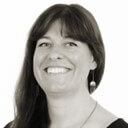

ABPmer provides technical input to wild seaweed harvesting Strategic Environmental Assessment
Scottish Ministers are considering a formal consenting mechanism to ensure the harvesting of wild seaweed and seagrass is sustainable. ABPmer has been contracted to support an environmental assessment to support the decision.
Leading marine environmental consultancy, ABPmer, has been contracted by Marine Scotland to provide specialist input to its Strategic Environmental Assessment (SEA) for wild seaweed harvesting.
Scottish Ministers are considering whether a formal consenting mechanism should be put in place to ensure that the harvesting of wild seaweed and seagrass in Scotland is sustainable.
To inform the development of possible policy measures, Marine Scotland is undertaking an SEA of wild seaweed harvesting including calcified seaweed and seagrass. ABPmer has been commissioned to provide technical input to the assessment.
Elena San Martin, a specialist in environmental impact assessment at ABPmer said,
“We are delighted to be helping Marine Scotland determine whether wild harvesting activities can be done sustainably.
“To support their assessment we will identify and map potential wild harvesting sites, assess the impact of harvesting on biodiversity, flora and fauna and climatic factors, and identify measures that will mitigate adverse effects and, where possible, enhance the marine environment. The work will be undertaken with input from a range of stakeholders, including the Scottish Seaweed Industry Association.”
ABPmer has an excellent track record in managing and contributing to integrated environmental projects across a wide range of sectors, as well as undertaking strategic work for government departments, devolved administrations and related agencies. Its Environment Team has a wealth of experience in undertaking SEA and other sustainability assessments for marine and sectoral planning in the UK marine environment. ABPmer will be joined on this project by Stirling University who will provide scientific advice on seaweed ecology.
Header photo courtesy Andrew Pearson


